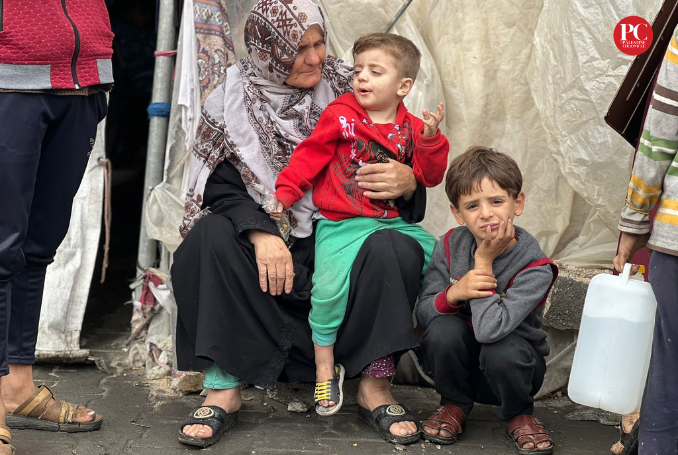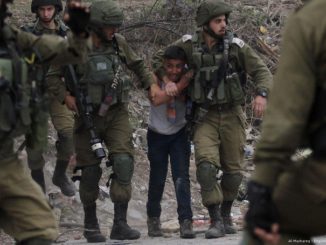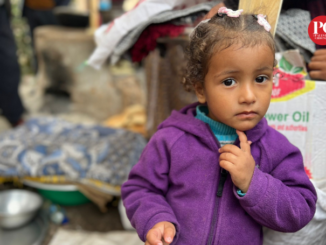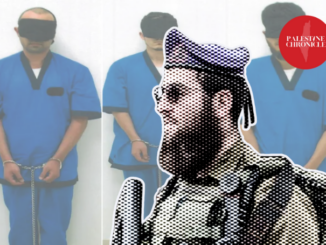
By Benay Blend
There are many external plans for Gaza on “the day after,” most of which take no notice of Palestinian agency or desire.
Just as there are various possible outcomes, there are several ways to describe the horror that “Israel” has inflicted on Gaza over the past approximately 130 days.
“Siege” fits nicely into the title, but it has been a 75-year siege culminating in an escalation of the violence over the past three months. Genocide more accurately describes the situation, intensified ethnic cleansing that has been the Zionist’s goal since 1948.
The “day after” trope has enjoyed many years of popularity, including proposed outcomes of major wars as well as cinematic themes. World War I was labeled the war to save democracy; World War II was the conflict that would enshrine self-determination in the charter of the United Nations.
As recent events have shown, neither have come about. In 1948 the United Nations created the state of “Israel,” which has been called “the only democracy in the Middle East,” but partly because of the Nakba followed by 75 years of occupation, it has never lived up to that name. There has been no self-determination for Palestinians, who even today are denied agency by “liberals” who should know better.
After the United States dropped an atomic bomb on Hiroshima and Nagasaki at the end of World War II, there were various films that showed the horror that follows the explosion. In 1959, On the Beach portrayed a world in which everyone has died except for residents of Australia, who find out that the radioactive cloud will soon reach them, signaling the end of their lives too.
The film for many of us was horrifying, but for world governments not so much, as the threat of nuclear war remains an issue up until today. In more recent films, such as Oppenheimer, the creator of the bomb is portrayed as a hero. Not so much for my neighbors across the street, who are part of the Tularosa Basin Downwinders Association, an organization composed of several generations of victims of the July 16, 1945 Trinity test in South-Central New Mexico.
In each generation of their family there has been cancer caused by testing of the bomb. They were never told about the contamination of their water supply, their land, and their very bodies. Now, many decades later, these families are seeking to tell the truth as well as to obtain compensation for their loss. Still, how does the government compensate for the loss of a brother, a mother, a son?
What does this have to do with Gaza in 2024? As of January 4, 2024, “Israel” had dropped more than 45,000 bombs on Gaza weighing more than 65,000 tons, according to the Gaza Media Office. More than the weight and power of nearly three nuclear bombs like those dropped on Japanese cities, about 2/3 if these devices were “dumb bombs,” meaning unguided and imprecise, and they were dropped on residential areas of the Gaza Strip.
In past wars, “Israel” faced accusations of using shells that contained depleted uranium, a radioactive material that remains in the environment most likely causing cancer and birth defects for generations to come. Environmentalists who ignore these facts are complicit in whitewashing “Israel’s” scorched earth policy aimed at further ethnic cleansing.
There will no doubt be consequences from the harm done to Palestinians for many years to come, and it is up to this generation and those who come after to ensure that the thousands who are deceased will not have died in vain.
This means exposing the ways that the media has lied about the carnage. In a recent exposé in The Guardian, Chris McGreal revealed the ways that CNN runs biased news that relies on “Israeli” propaganda while censoring Palestinian perspectives. Unfortunately, other mainstream news sources, except for the right-wing New York Post, have remained silent on this story.
On the masthead of the Palestine Chronicle are the following words:
“We Tell the Truth on Gaza. Always. At the Palestine Chronicle, we don’t beg mainstream media to tell the truth about Gaza. We tell it ourselves.”
In other words, expose mainstream media for what it is, but learn to listen to Palestinians tell their own stories, for who knows it better than the source?
There are many external plans for Gaza on “the day after,” most of which take no notice of Palestinian agency or desire. For example, an extremely offensive ad on the streaming platform Hulu portrays an imaginary “Gaza without Hamas.” It ends with the plea “free Gaza from Hamas now,” a vision perhaps of “the day after” that totally ignores the destruction that only “Israel” has caused.
The ad assumes that without Hamas Gaza could have been a tourist attraction replete with pristine beaches, nightclubs, food and culture, the latter Middle Eastern but preferably cooked by “Israeli” chefs. There is no room in these visions for resident Palestinians because the goal is extermination and/or forced transfer to yet another refugee camp on some else’s land.
In early January, Defense Minister Yoav Gallant outlined “Israel’s” plans for the “day after.” While he claims that there is no place for Hamas in post-war Gaza, he called instead for “Palestinian bodies” to be in control, so long as they harbor “no hostile actions or threats” against the state of “Israel.” In other words, a governing body like the Palestinian Authority, ruling in name only while subservient to the directions of the entity.
No one knows what the day after will look like, without at least a crystal ball. But there are some conclusions that can be drawn from history that continues to play out even until today.
What are Palestinian priorities after the war? According to Ramzy Baroud, the main goal, aside from digging the bodies of the dead out from under the rubble and bringing aid to hospitals and the people, is to ensure that “Israel”does not claim any victory over the Palestinians. For the first time, Baroud explains, Palestinians are at the center of the conversation regarding the Middle East, and once there, they must continue to hold onto their hard earned agency that allows them self-determination over their own affairs.
Moreover, Baroud explains that the issue will not be one state, two state, or any state, but rather the Zionist state of “Israel,” who would be free to do what they want if Palestinians are unarmed. Also of concern are the Palestinians who reside as second-class citizens within the ’48, what will happen to them? The problem, he concludes, has always been Zionism, and until it is dismantled, there can never be a just much less sustainable peace.

– Benay Blend earned her doctorate in American Studies from the University of New Mexico. Her scholarly works include Douglas Vakoch and Sam Mickey, Eds. (2017), “’Neither Homeland Nor Exile are Words’: ‘Situated Knowledge’ in the Works of Palestinian and Native American Writers”. She contributed this article to The Palestine Chronicle.







